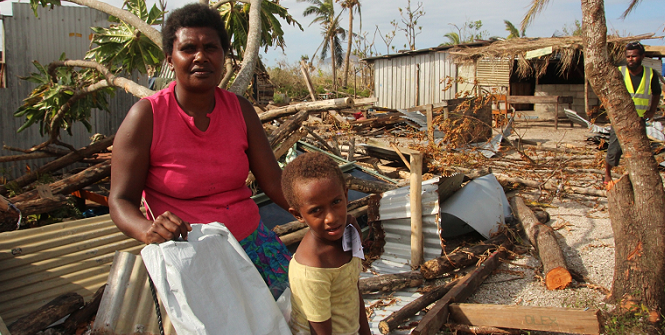Localising Humanitarian Action – What it Means for Aid in the Pacific

A pledge made by the Australian Government and Australian Red Cross will have lasting implications for the humanitarian system in the Pacific.
Australia was among 190 countries represented at the 32nd International Conference of the Red Cross and Red Crescent in Geneva from 8-10 December 2015. Each state present at the conference was invited to make joint pledges with their Red Cross or Red Crescent society to work together on key humanitarian issues.
One of Australia’s nine pledges was to strengthen local humanitarian action, with a strong focus on the Pacific. The language of this pledge has significant implications for local and international humanitarian actors.
The call for localisation of aid is not new. Agencies such as Oxfam and the International Federation of the Red Cross have recently published reports highlighting the critical role of local humanitarian agencies during a disaster, while pointing out that these agencies are often excluded from decision-making when the international response is under way.
The pledge by Australian Red Cross and the Australian Government encompasses a number of strategies to change this situation. At its heart is a commitment to strengthen Pacific Red Cross societies and the way they work with their own governments.
More effort will go into disaster law: its creation, adoption and practical application. When widely understood and properly applied, disaster laws enable relief goods to clear customs and quarantine processes quickly enough to reach those who need them. They regulate the quality and professionalism of international assistance and they enable governments to maintain authority and accountability in a disaster.
Disaster law also requires investment in disaster risk reduction; from land use planning and building codes to governments and humanitarian agencies working together to identify and address risks at the community level.
There will be more investment in local humanitarian agencies. Pacific Red Cross societies will train in emergency needs assessments, shelter, water, sanitation and hygiene, disease outbreaks and other areas necessary to manage a disaster response in their own contexts. The pledge extends beyond technical skills and also covers logistics, management systems, equipment and networks. Wherever possible, local humanitarian agencies will be encouraged to broker resources from within their own countries, often by partnering with the private sector.
Local authorities and Pacific Red Cross societies will have support to address gender equality, protection and inclusion within their local contexts. In particular, promoting the leadership role of women and addressing sexual and gender-based violence.
Peter Walton, Director of International Programs at Australian Red Cross, views the pledge as the start of a significant shift in the balance between international and local humanitarian actors.
‘International support for local actors is not about making them ‘better recipients’ of our aid. It must start and end with local actors being first responders in their own communities and managing and directing international aid to where it can best be used,’ he says.
Lessons can be learned from the Philippines. The devastation of Typhoon Haiyan in 2013 resulted in local authorities overseeing mass evacuations and rapid emergency responses, drastically lowering the death toll in subsequent typhoons including last week’s Typhoon Melor.
‘International humanitarian agencies should be brokers for their local partners – acting under local leadership, helping them to source resources, equipment or knowledge, providing surge support to help fill gaps and then working with them to fix those gaps,’ Mr Walton says.
‘In the long run, this will mean big changes in the humanitarian system and a significantly changed role for international agencies. This is a positive thing – and we need to work with our partners on ways to make it happen.’
This article was written by Zayne D’Crus and is a part of an ongoing series by the Australian Red Cross. It may be republished under a Creative Commons License.


